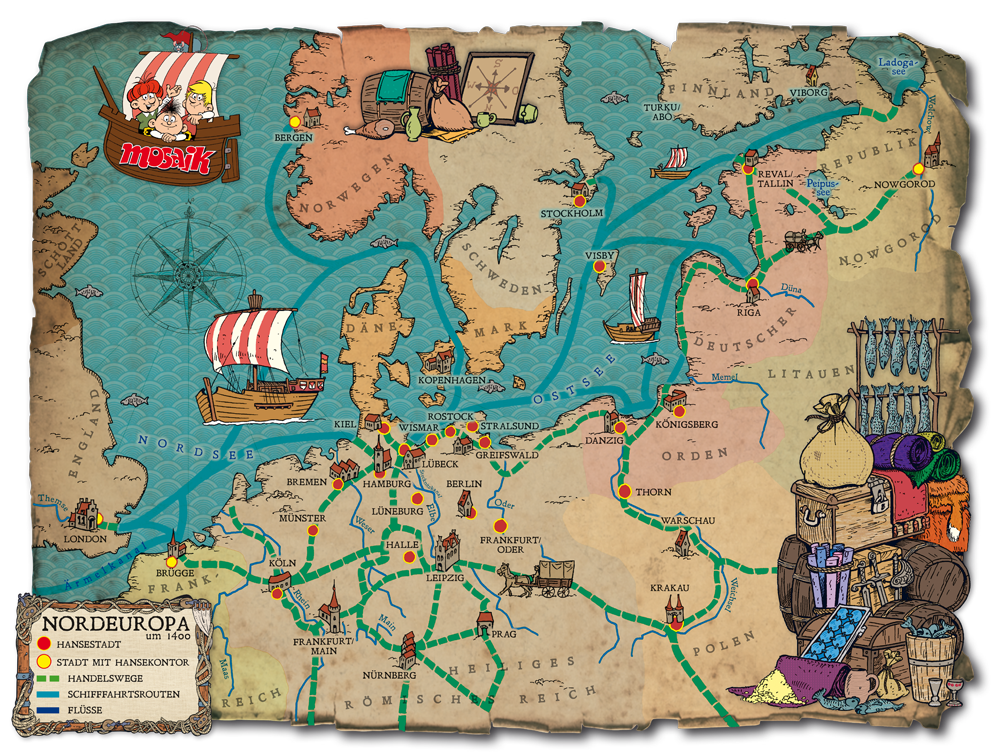-
Published on Tuesday, 27 February 2018 15:58

Since the 12th century, the Hanseatic League rose to become an important player for power in the Lower German regions. As a merchant covenant it enforced trading privileges on its members and did not hesitate to use political and even military means when these privileges were threatened. Not only towns on the Baltic Sea were a part of the Hanseatic League. In the entirety of Lower Germany towns belonged to the covenant. For a long time Cologne was the largest Hanseatic city. In its heyday the Hanseatic League had many hundred members. The heart of the covenant was Lübeck. The cultural influence of the Hanseatic League should not be underestimated either. That’s why most of the cities in the Baltic region, that were founded at that time, took on the Lübeck law. Cities’ main churches were often modeled after Lübeck’s main church of St. Mary.
The trade routes of the Baltic Sea were dominated by the Hanseatic League. Salt from Lüneburg was an important commodity. Salt was used all over the shores of the Baltic Sea to preserve the rich herring catches.
The Hanseatic League also traded outside of Lower Germany. The most important branches were the Stalhof in London, the Peterhof in Novgorod in Russia, as well as the offices in Flanders Bruges and Bergen in Norway.
So called „Hanseatic Days“ took place regularly until the 17th century. At these meetings, discussion were held and binding decisions for all members were made. In 1669, the Hanseatic cities met for the last time. The Hanseatic League was never dissolved.


